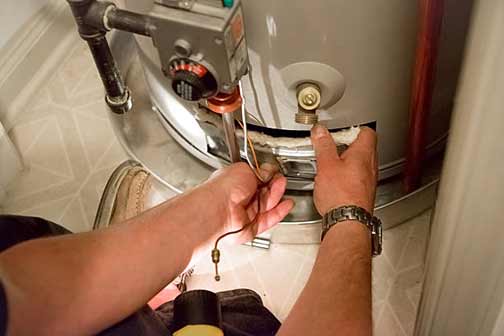
All water heaters, including the one in your home, have an expiration date. This is the number of years the manufacturer estimates the appliance will last. Generally, Los Angeles Management Group says, the projected lifespan for storage water heaters is 8 to 12 years, and 20 years for tankless water heaters.
But most water heaters don’t last this long; they either stop working or become very problematic long before they approach the end of their estimated service life. The main reason for this is that the majority of homeowners don’t maintain their water heaters as they should.
As a result, avoidable problems occur, and what often starts as a routine fault in the appliance is allowed to grow into a massive issue that eventually destroys the water heater. How should you maintain your water heater for longevity and efficiency?
Maintaining your water heater for optimal performance
To keep your water heater running smoothly all year round, you need to know the right things to do to the appliance and when to do these steps. Below you will find a list of key water heater maintenance steps, along with how and when to perform them.
Yearly maintenance tasks
The following steps should be done once every year.
Do not forget to turn off your water heater before doing any of these maintenance steps.
Drain and flush the water heater tank: Connect a hose to the drain valve at the bottom of the tank. Open the valve after making sure the TPR valve and water inlet valve are closed. Let the tank empty completely and then refill it by opening the cold-water inlet valve and closing the drain valve. After the tank is filled, repeat the above process to make sure the tank is clear of all debris.
Test the TPR Valve: Place a bucket under the drainpipe, lift the lever of the TPR valve, and hold it open. Let the water flow for 5-10 seconds (flow should be smooth). Free the lever to observe if the valve closes completely and the flow stops immediately. If you are unhappy with the results, replace your TPR Valve.
Check and replace the anode rod: Close the water inlet valve after shutting off the power and draining some water out of the tank. Unscrew the anode rod (find it on the cap of the water heater tank). Pull it out and inspect it; if it is corroded or has a lot of buildup, it should be replaced. Depending on the water quality in an area, anode rods should be replaced every 2-5 years, but should be checked annually.
Test the thermostat: This step requires professional help because it involves working with electricity and requires specialized tools. Locate the thermostat in the water heater access panel. Set your multimeter to continuity mode and touch each probe to the correct terminal. Next, use the multimeter to check for continuity in the heating terminals.
Clean the burner assembly: Turn off the water heater and open the access panel. Locate the burner assembly and blow out the dust and debris with a blower. If there is buildup on the burner assembly, remove it with a soft brush or vacuum with a brush attachment. To remove carbon buildup, use a small wire brush. Be gentle to avoid damage to the burner assembly.
Examine the flue and venting system: For fuel-burning water heaters, this step helps prevent the buildup of toxic gases inside the home. The flue pipe carries exhaust gases from the appliance to the outdoors. Vents may become clogged with debris and animal nests. Due to the risks involved in this task, it should be done by a professional.
Check electrical connections and insulation: Ensure there are no damaged wires or loose connections. Replace all worn-out wires. If there is an insulation blanket or insulation wrap on the tank, ensure it covers the tank adequately while still providing access to the control switch and burner panel.
Professional water heater inspection: Yearly inspections by a licensed professional ensure the longevity and optimal performance of your water heater. This inspection includes all the maintenance steps explained above, plus other checks that you may not be able to do as a non-professional and protects you against a premature replacement of your water heater.
Monthly maintenance checks
Monthly water heater checks help you catch problems at their early stages. The most important ones include:
- Checks for signs of corrosion and blockage around the flue, air intake, and vents
- Exterior checks for signs of leaks. Pay attention to the tank and pipes. Look for wet spots.
- To prevent life-threatening emergencies, always verify that the TPR valve is working.
- Listen for strange sounds (popping or rumbling) whenever the water heater is running.
- If it is a gas heater, check the burner compartment to see if there is a steady blue flame.
Lastly, remember that prompt action will help you avoid costly water heater problems in your home. Always take action at the first sign of trouble if you want your water heater to serve you for a very long time.

